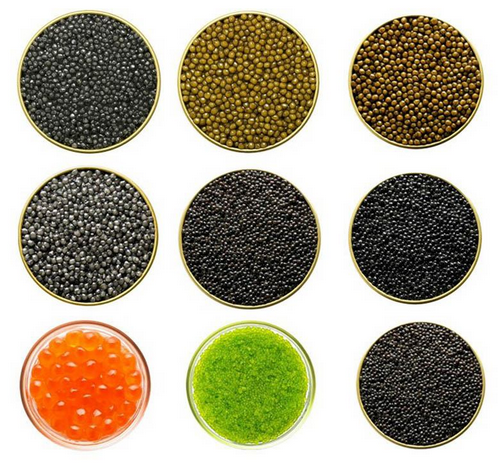Let’s talk poker—but not the smoky-room, chips-clinking kind. Let’s talk digital poker, the one that fits in your pocket, your laptop, and even your smartwatch. It’s 2025, and cross-platform poker is no longer a luxury—it’s a must. If your app can’t run seamlessly on both iOS and Android, or sync chips between your tablet at lunch and your PC at midnight, you’re behind the curve.
According to a March 2025 gaming analytics report, over 72% of poker players switch between at least two devices weekly. In 2010, that number was barely 8%. Things have changed fast—and developers are scrambling to keep up. Building a poker app that feels natural on every device sounds great until you try it. That’s when reality hits: dozens of OS versions, hundreds of screen resolutions, conflicting payment rules, and thousands of hardware quirks. Let’s dig into what makes cross-platform poker development such a tough nut—and how smart developers are cracking it.
1. The Explosion of Multi-Device Poker Play
Back in 2004, online poker meant a clunky Windows desktop client. You’d double-click a .exe file and pray your connection didn’t drop. Fast forward to 2025, and players are sitting at poker tables on phones, tablets, smart TVs, even VR headsets. One report from AppBrain (2024) counted 2.7 billion active mobile gamers—about 40% of them play card or casino-style games. That’s more than the entire population of Europe and South America combined.
It’s no wonder major operators began going cross-platform. PokerStars, for instance, reported a 23% increase in mobile-table participation between 2022–2024. People love flexibility: play a Sit-n-Go on your iPhone during commute at 8:30 AM, then finish a tournament on your MacBook at 9:15 PM. Players expect that seamless experience—and if your app lags or logs them out, they’ll uninstall faster than a bad beat on the river.
2. Challenge #1: Fragmented Platforms & Operating Systems
Here’s the big one: platform chaos. The average poker developer in 2025 must deal with five major platforms—iOS, Android, Windows, macOS, and browsers—and over 40 different device resolutions. Each one has its quirks. Android alone runs on 18,000+ device models (yes, really).
Imagine testing your poker app on a Samsung Galaxy Z Fold, an iPhone 16 Pro, a Lenovo tablet, and an HP laptop—all with slightly different GPUs, frame rates, and security rules. Nightmare fuel, right? That’s why cross-platform devs spend 35% of total project hours on testing alone. Then there’s OS fragmentation: Android 11, 12, 13, iOS 16, 17, 18—each with different SDK limitations. Ensuring a consistent poker experience across them all is like juggling flaming cards.
3. Challenge #2: Synchronization & Real-Time Data Consistency
If you’re playing a hand on your tablet at 5:42 PM and switch to your phone at 5:43 PM, every chip, card, and bet must match exactly. No one wants phantom chips or duplicated pots. Achieving real-time sync across servers and clients is brutally complex.
In 2023, several poker networks reported lag spikes during cross-device logins—causing missed turns and auto-folds. That’s a nightmare for competitive players. With tournaments hosting 10,000+ participants daily, even a half-second lag can affect fairness. Developers solve this with server mirroring, websocket synchronization, and predictive caching—but it’s expensive. Maintaining under 100 ms latency globally requires CDNs and redundant server farms—costing up to $200,000/year for major operators.
4. Challenge #3: UI/UX Consistency Across Platforms
Poker players are picky. The button placement, chip animation, table color—everything matters. Designing for both touchscreen and mouse is a constant balancing act. On mobile, your thumb covers half the table; on desktop, you’ve got tons of space.
In 2024, a usability test found that 63% of users mis-tapped bet sliders on small-screen poker apps. That’s why smart UI designers create adaptive layouts—buttons scale, chips move dynamically, and menus fold automatically. Developers use responsive frameworks to maintain clarity on both 5-inch phones and 32-inch monitors. Yet true perfection remains rare. A sleek iPhone app may look clunky on Windows, and vice versa.
5. Challenge #4: Payment Systems & Regional Restrictions
Money is where poker apps either shine or collapse. Processing payments globally means dealing with dozens of gateways—Visa, MasterCard, PayPal, Skrill, crypto wallets, and local options like India’s UPI.
In June 2023, one platform got suspended in Germany for missing EU transaction transparency requirements. In 2025, compliance with regional gambling laws is non-negotiable. Each market—from Canada to Singapore—has unique age limits, tax laws, and deposit rules. Developers must integrate multiple payment APIs and verify users under KYC (Know Your Customer) protocols within 24 hours. Smooth withdrawal under 12 hours has become the new gold standard.
6. Challenge #5: Security & Anti-Fraud Systems
If you’ve ever read about the 2011 “Black Friday” poker scandal, you know how vital security is. Cross-platform systems multiply vulnerabilities—each device is another potential entry point.
Developers now use AES-256 encryption, SSL pinning, two-factor authentication, and heuristic bot detection. In 2024, one poker operator reported stopping 1.3 million fraudulent login attempts in six months. Bot usage rose by 28% between 2022–2025, so defense tech must evolve constantly. AI-powered anti-fraud engines monitor behavior patterns like reaction speed and bet frequency. If someone acts faster than humanly possible, they’re flagged within seconds.
7. Solutions: Cross-Platform Frameworks & Tech Stacks
Now, the fun part—solutions. The best poker platforms in 2025 rely on cross-platform frameworks like Unity, Unreal Engine, Flutter, and React Native. Unity alone supports deployment to 25+ platforms from one codebase.
Flutter, released by Google in 2018, saw a 190% rise in casino-app adoption by 2024. Why? It reduces development cost by 40% and speeds release cycles by months. Some studios also use C++ backends with WebAssembly front-ends for browsers. Cloud servers handle matchmaking, chat, and RNG (random number generation) ensuring identical logic on every device. The result: smoother gameplay, fewer bugs, happier players.
8. Solutions: Modular Game Architecture
Think of modular architecture like LEGO blocks. You can swap a chip animation engine without touching the hand-ranking module. Developers build poker apps using separate “modules” for UI, payments, tournaments, and user accounts.
This flexibility saved one studio in October 2024, when new EU anti-gambling updates forced payment redesigns—they replaced the wallet module in two days, not two weeks. Modular builds also scale easily. When your player base jumps from 10,000 to 250,000 in a month, servers don’t melt. Microservices let poker ecosystems expand dynamically—more players, more tables, more fun.
9. Solutions: AI-Powered Testing & Performance Optimization
AI’s not just playing poker—it’s building it better. Modern dev teams use machine learning to simulate 100,000 games overnight, testing everything from button delays to random crashes.
In 2025, QA automation tools detect up to 87% of UI inconsistencies before human testing even begins. That means fewer bugs reach players. Predictive load testing allows developers to anticipate lag under heavy tournament traffic. For instance, if the app expects 50,000 concurrent logins during a Sunday event, AI can model traffic and pre-scale server capacity 15 minutes ahead.
10. Solutions: Collaboration with a Skilled Poker Game Development Team
Technology’s great—but human expertise seals the deal. A seasoned Poker Game Development team brings experience from years of coding, testing, balancing odds, and optimizing player experience. These teams don’t just write code—they understand player psychology, compliance law, and UX behavior.
In 2025, companies with in-house poker specialists deliver projects 33% faster on average. They anticipate edge cases—like how latency feels during 6-handed turbo tournaments or how gestures differ between Samsung and iPhone. When hiring, operators often look for teams with at least 5+ years of poker-specific experience and past projects generating $1 million+ annual revenue.
A good Poker Game Development team ensures every line of code supports stability, fairness, and fun. Collaboration across designers, testers, and backend architects keeps apps both secure and scalable.
11. Future Trends: Seamless Device Integration & VR Poker
The next frontier’s already here. Smartwatches, AR glasses, and VR headsets are redefining the table. In February 2025, a beta VR poker lounge launched in Las Vegas—complete with virtual chips you could flick using hand-tracking.
By 2026, analysts expect 15 million active VR poker users globally. Cross-platform will soon mean switching not only between phone and PC but also between VR, AR, and even smart cars (yes, Tesla dashboard poker is real). Voice-controlled betting and gesture-based folding may sound wild today, but developers are already testing it.
The challenge will shift from screen resolution to sensory consistency: vibration feedback, 3D sound, haptic cues. Cross-platform poker in 2030 might feel less like software and more like a live casino that follows you everywhere.
12. Conclusion
So there you have it—cross-platform poker development isn’t for the faint of heart. Between device fragmentation, synchronization headaches, UX chaos, payment compliance, and evolving security threats, it’s a juggling act worthy of a Vegas stage. But the rewards are huge: a single app that works perfectly across all devices, retaining players and boosting engagement.
With smart frameworks, modular design, AI automation, and a skilled Poker Game Development company, the dream of seamless poker everywhere is becoming reality. The best developers of 2025 aren’t just coding—they’re building bridges across ecosystems, devices, and player communities.
In a few short years, poker won’t live in one app or one platform. It’ll live everywhere. Whether you’re bluffing from a VR headset in Tokyo or checking a hand on your smartwatch in Paris, the future of poker will always be in your hands—literally.






